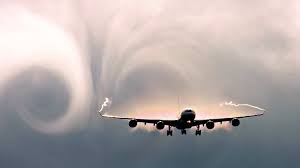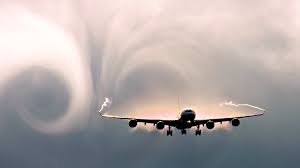
Is the outcome of a new study is to be believed, the amount of severe turbulence on planes by 2050 to 2080 is set to increase due to climate change.
With a focus on clear air turbulence, the results were arrived at by researchers at the University of Reading in England by conducting a detailed analysis of supercomputer simulations of the future atmosphere. Seen as being especially problematic is the phenomena of clear air turbulence because it is invisible.
The readings that were recorded by the researchers and contained within the research do not make for comfortable reading for nervous fliers.
The report states that the turbulence at a typical cruising altitude of 39,000 feet is set to rise to severe levels. the study predicted that there would be an increase of about 181 percent over the North Atlantic; 161 percent over Europe; 113 percent over North America; 92 percent over the North Pacific; and 64 percent over Asia in the severity of turbulence at the cruise altitude.
characterized by large and abrupt changes in altitude or attitude (relating to an aircraft's orientation), severe turbulence is also described by Australia's Civil Aviation Safety Authority (CASA) as one that have "large variation in indicated airspeed". The CASA adds that an aircraft "may be temporarily out of control" during periods of or travelling through an area of severe turbulence.
"While turbulence does not usually pose a major danger to flights, it is responsible for hundreds of passenger injuries every year," Luke Storer, a PhD researcher who worked on the study, said. "It is also by far the most common cause of serious injuries to flight attendants."
For the Southern Hemisphere and tropical regions, the first turbulence projections were also made by the study. About 62 percent over South America; 53 percent over Australia; and 51 percent over Africa was the anticipated increase in severe turbulence according to the study.
Strengthening of wind instabilities at high altitudes in the jet streams as a direct result of global temperature changes have been held up as the reason for the projected turbulence increases. Creation of pockets of rough air becoming stronger and more common is the outcome of wind instabilities at high altitudes.
"Air turbulence is increasing across the globe, in all seasons, and at multiple cruising altitudes," Paul Williams, professor of atmospheric science at the University of Reading, said in a statement.
"This problem is only going to worsen as the climate continues to change," Williams, who led the research, added. The risk of injuries to passengers could be cut and the cost of turbulence to airlines could be reduced by better turbulence forecasts and the study highlights the need to develop better turbulence forecasts, he said.
(Source:www.cnbc.com)
With a focus on clear air turbulence, the results were arrived at by researchers at the University of Reading in England by conducting a detailed analysis of supercomputer simulations of the future atmosphere. Seen as being especially problematic is the phenomena of clear air turbulence because it is invisible.
The readings that were recorded by the researchers and contained within the research do not make for comfortable reading for nervous fliers.
The report states that the turbulence at a typical cruising altitude of 39,000 feet is set to rise to severe levels. the study predicted that there would be an increase of about 181 percent over the North Atlantic; 161 percent over Europe; 113 percent over North America; 92 percent over the North Pacific; and 64 percent over Asia in the severity of turbulence at the cruise altitude.
characterized by large and abrupt changes in altitude or attitude (relating to an aircraft's orientation), severe turbulence is also described by Australia's Civil Aviation Safety Authority (CASA) as one that have "large variation in indicated airspeed". The CASA adds that an aircraft "may be temporarily out of control" during periods of or travelling through an area of severe turbulence.
"While turbulence does not usually pose a major danger to flights, it is responsible for hundreds of passenger injuries every year," Luke Storer, a PhD researcher who worked on the study, said. "It is also by far the most common cause of serious injuries to flight attendants."
For the Southern Hemisphere and tropical regions, the first turbulence projections were also made by the study. About 62 percent over South America; 53 percent over Australia; and 51 percent over Africa was the anticipated increase in severe turbulence according to the study.
Strengthening of wind instabilities at high altitudes in the jet streams as a direct result of global temperature changes have been held up as the reason for the projected turbulence increases. Creation of pockets of rough air becoming stronger and more common is the outcome of wind instabilities at high altitudes.
"Air turbulence is increasing across the globe, in all seasons, and at multiple cruising altitudes," Paul Williams, professor of atmospheric science at the University of Reading, said in a statement.
"This problem is only going to worsen as the climate continues to change," Williams, who led the research, added. The risk of injuries to passengers could be cut and the cost of turbulence to airlines could be reduced by better turbulence forecasts and the study highlights the need to develop better turbulence forecasts, he said.
(Source:www.cnbc.com)





